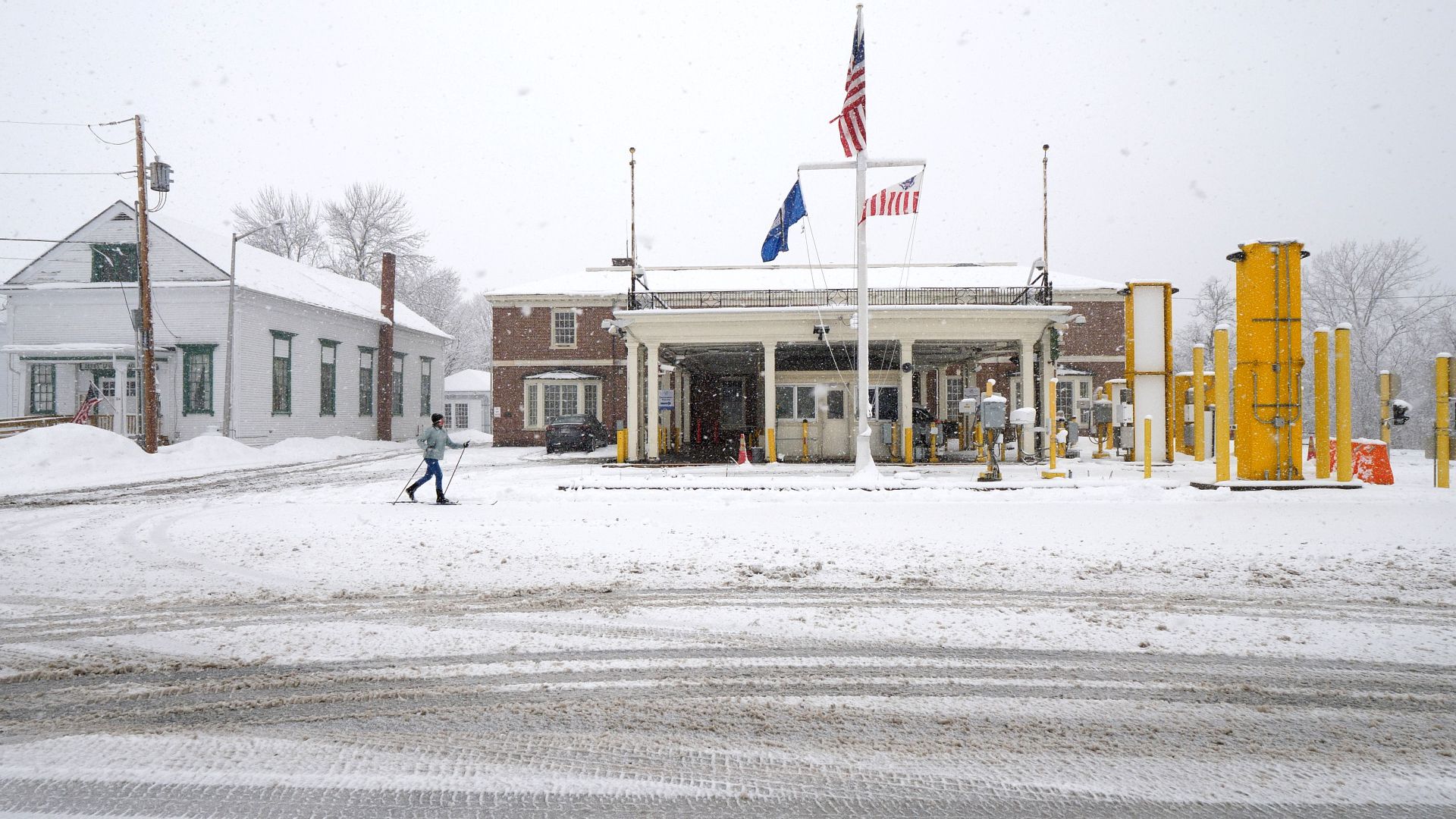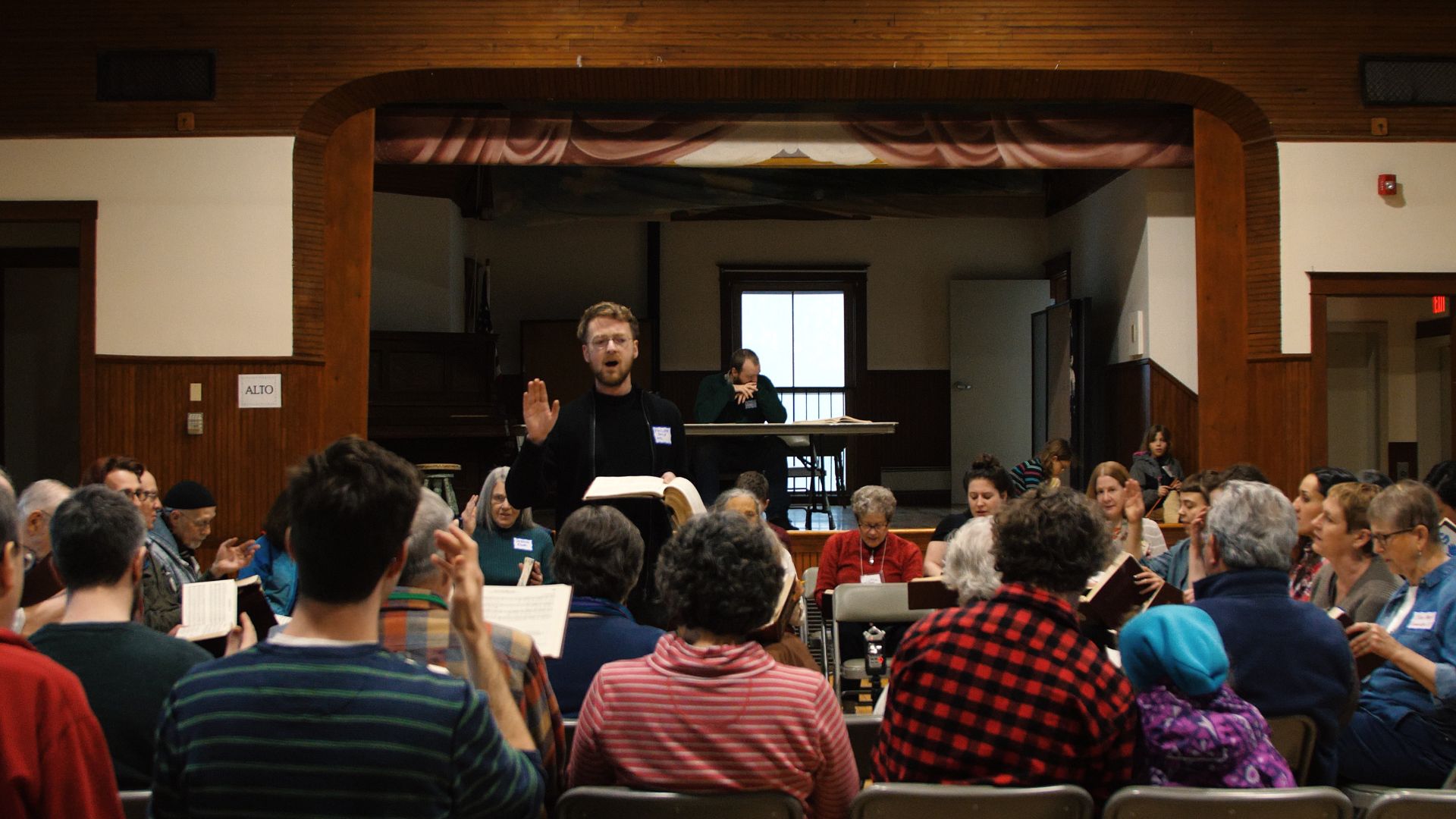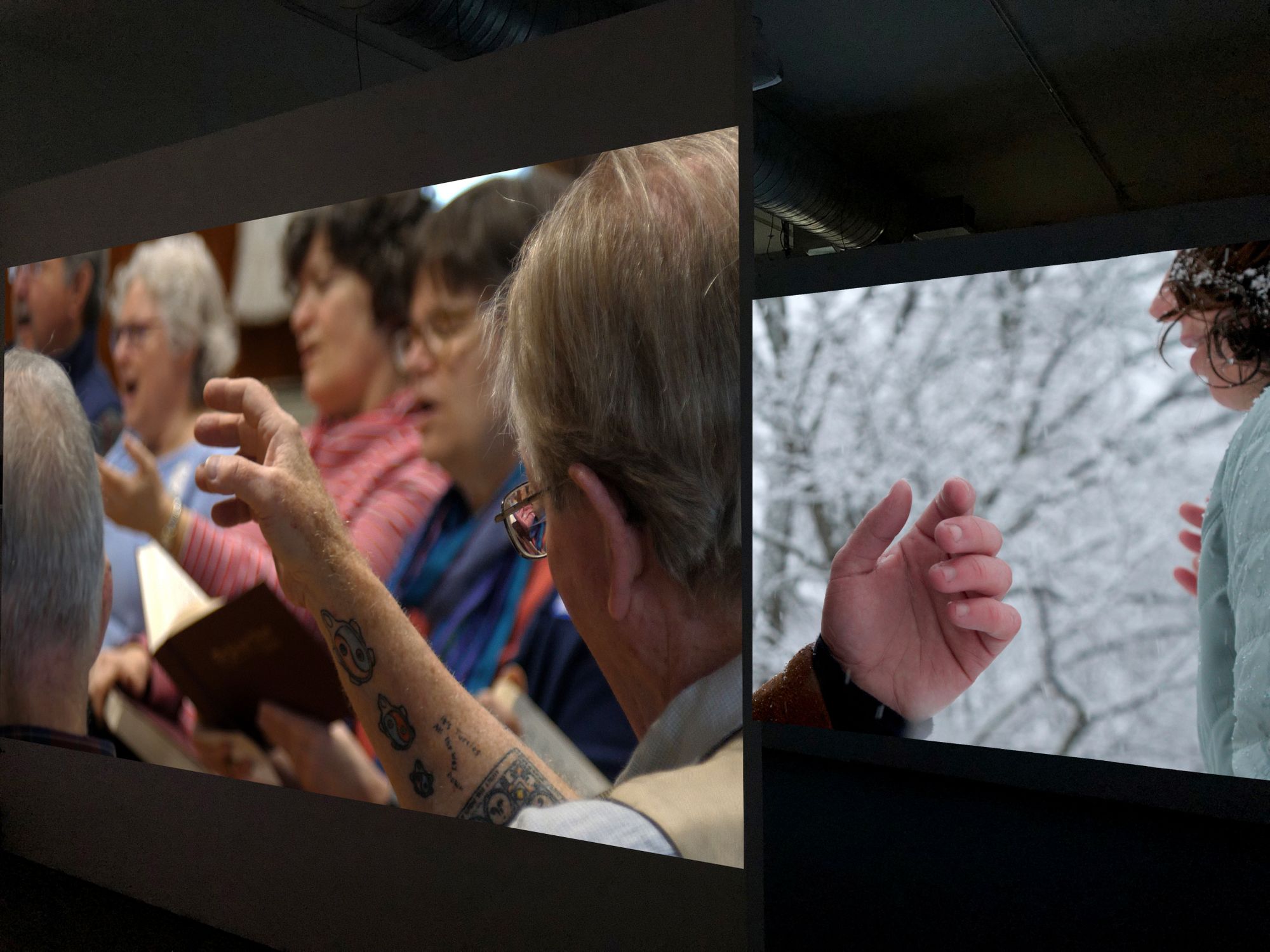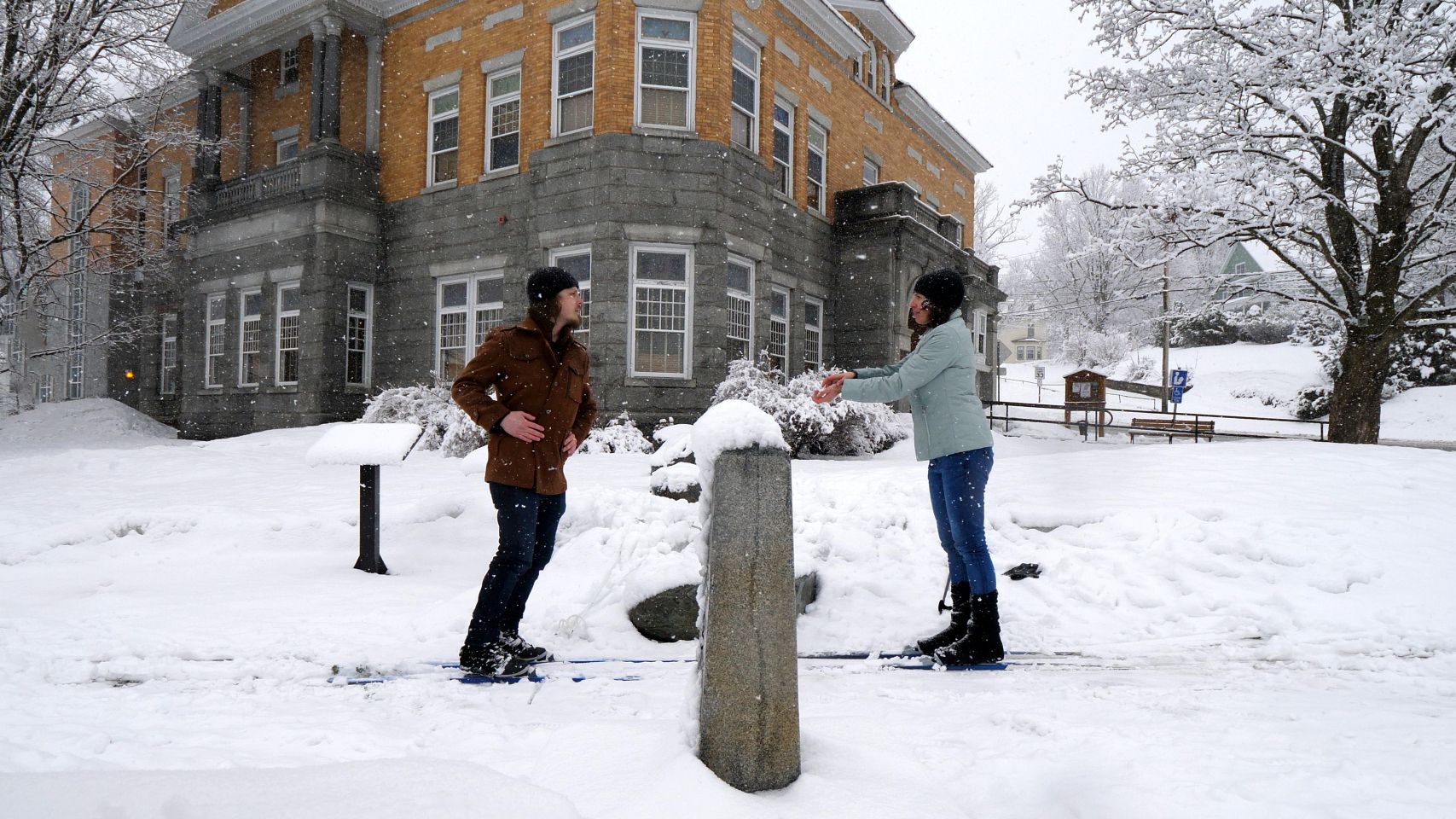by Cindy Knoebel
Derby Line, Vermont and Stanstead, Quebec are two rural towns divided by the US/Canadian border. These small communities have recently become better known because immigrants affected by the US travel ban are reuniting with family members at its library.

The library, uniquely situated in both the US and Canada, is one of the few places on the continent where those living in the US with visas that do not allow return-entry can reunite with family members who are not allowed to enter the US because they are citizens of countries on the US travel ban list.
The Hamiltonian Gallery in Washington DC is presenting n e i g h b o r i n g | t o w n s, by Heather Theresa Clark + Pauline Jennings, on view from May 18 – June 22, 2019. n e i g h b o r i n g | t o w n s is an immersive four-channel video and sound installation about borders, restriction of movement, and family/community life as represented by Derby Line and Stanstead.

Within n e i g h b o r i n g | t o w n s, an Iranian man whose family has traveled across the globe to reunite at the library describes their reunion. Music at the annual Vermont Sacred Harp Shape Note Sing, hosted by Derby Line’s bi-national singing group, provides a view into the local close-knit American/Canadian community. Other screens show the library’s quiet interior with a black line on its floor delineating the border; the Tomifobia River, which surges across the border; and two skiers, one in Derby Line, Vermont and one in Stanstead, Quebec, who eventually meet outside the library at the border, which is marked only by a single stone pilaster. The four videos are projected onto a maze of walls.

Until 9/11 these two neighboring border towns operated mainly as one cohesive community with homes, streets, and yards built right up to and often spanning the border. The border now slices what was once one community into two, reducing ease of movement. During interviews with community members, although many expressed great empathy for those having reunions, it was clear that there is minimal, if any, interaction between the local community (which is 96% Caucasian) and those who have flown in from around the world to reunite in this small rural community. In this work, precaution has been taken to protect the anonymity of the reuniting families.

n e i g h b o r i n g | t o w n s is made possible through the generous support of the Foundation for Contemporary Arts Emergency Grant and BenQ.
For more information, including background on the artists and contributions, visit the neighboring|towns website here.

